Yi-Fan Song
Constructing Stronger and Faster Baselines for Skeleton-based Action Recognition
Jun 29, 2021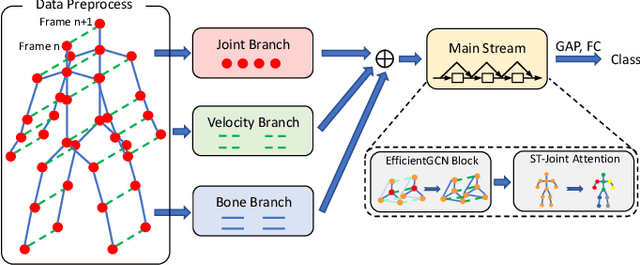
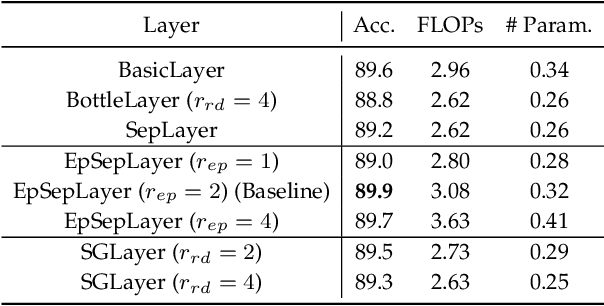
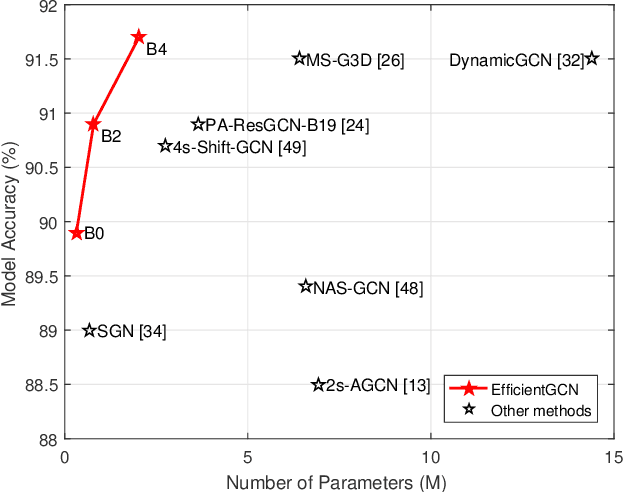
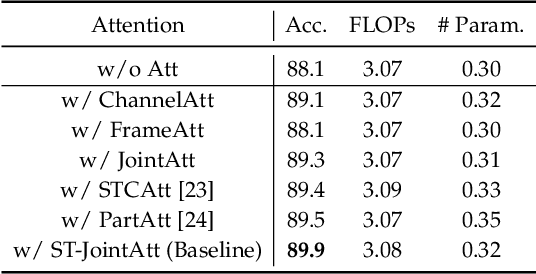
Abstract:One essential problem in skeleton-based action recognition is how to extract discriminative features over all skeleton joints. However, the complexity of the recent State-Of-The-Art (SOTA) models for this task tends to be exceedingly sophisticated and over-parameterized. The low efficiency in model training and inference has increased the validation costs of model architectures in large-scale datasets. To address the above issue, recent advanced separable convolutional layers are embedded into an early fused Multiple Input Branches (MIB) network, constructing an efficient Graph Convolutional Network (GCN) baseline for skeleton-based action recognition. In addition, based on such the baseline, we design a compound scaling strategy to expand the model's width and depth synchronously, and eventually obtain a family of efficient GCN baselines with high accuracies and small amounts of trainable parameters, termed EfficientGCN-Bx, where ''x'' denotes the scaling coefficient. On two large-scale datasets, i.e., NTU RGB+D 60 and 120, the proposed EfficientGCN-B4 baseline outperforms other SOTA methods, e.g., achieving 91.7% accuracy on the cross-subject benchmark of NTU 60 dataset, while being 3.15x smaller and 3.21x faster than MS-G3D, which is one of the best SOTA methods. The source code in PyTorch version and the pretrained models are available at https://github.com/yfsong0709/EfficientGCNv1.
Stronger, Faster and More Explainable: A Graph Convolutional Baseline for Skeleton-based Action Recognition
Oct 20, 2020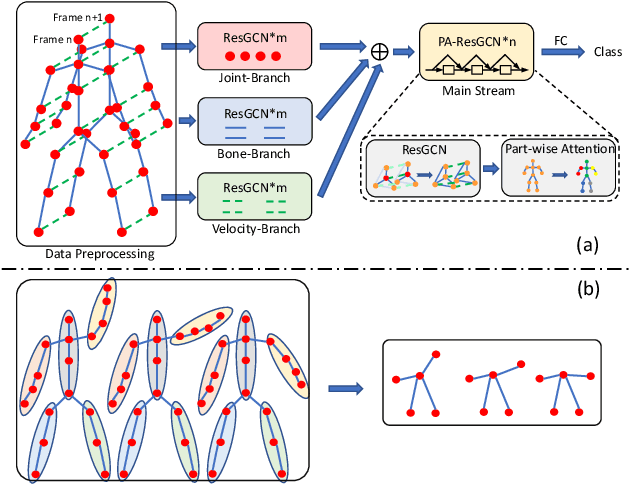

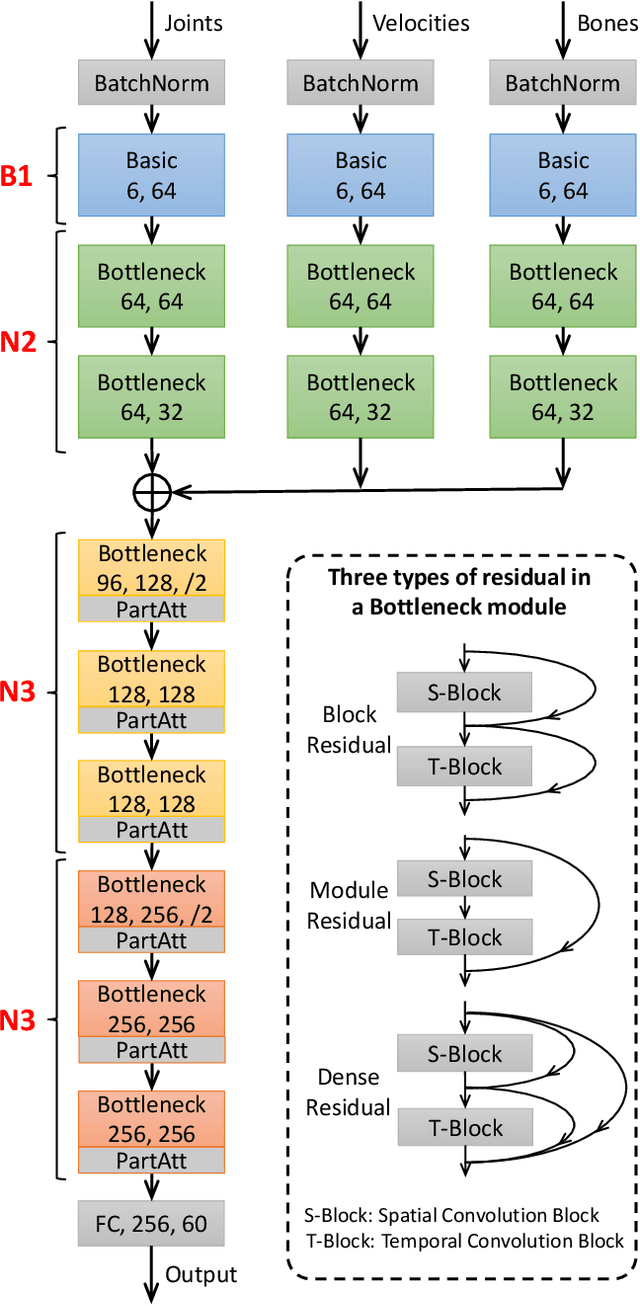
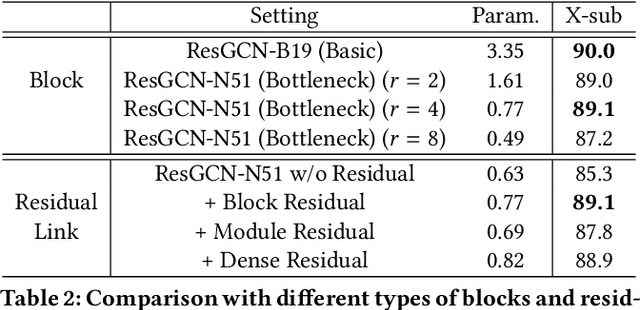
Abstract:One essential problem in skeleton-based action recognition is how to extract discriminative features over all skeleton joints. However, the complexity of the State-Of-The-Art (SOTA) models of this task tends to be exceedingly sophisticated and over-parameterized, where the low efficiency in model training and inference has obstructed the development in the field, especially for large-scale action datasets. In this work, we propose an efficient but strong baseline based on Graph Convolutional Network (GCN), where three main improvements are aggregated, i.e., early fused Multiple Input Branches (MIB), Residual GCN (ResGCN) with bottleneck structure and Part-wise Attention (PartAtt) block. Firstly, an MIB is designed to enrich informative skeleton features and remain compact representations at an early fusion stage. Then, inspired by the success of the ResNet architecture in Convolutional Neural Network (CNN), a ResGCN module is introduced in GCN to alleviate computational costs and reduce learning difficulties in model training while maintain the model accuracy. Finally, a PartAtt block is proposed to discover the most essential body parts over a whole action sequence and obtain more explainable representations for different skeleton action sequences. Extensive experiments on two large-scale datasets, i.e., NTU RGB+D 60 and 120, validate that the proposed baseline slightly outperforms other SOTA models and meanwhile requires much fewer parameters during training and inference procedures, e.g., at most 34 times less than DGNN, which is one of the best SOTA methods.
Richly Activated Graph Convolutional Network for Robust Skeleton-based Action Recognition
Aug 09, 2020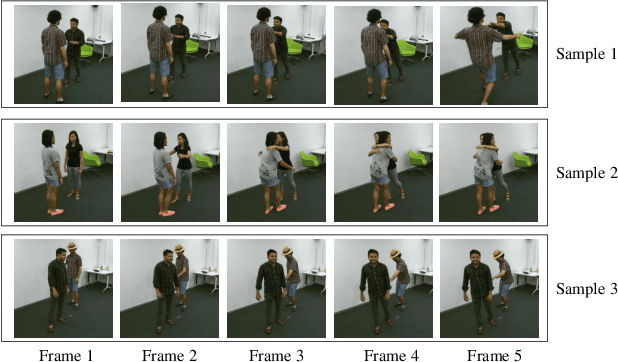
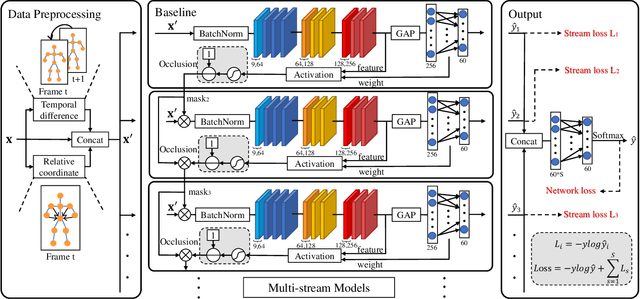
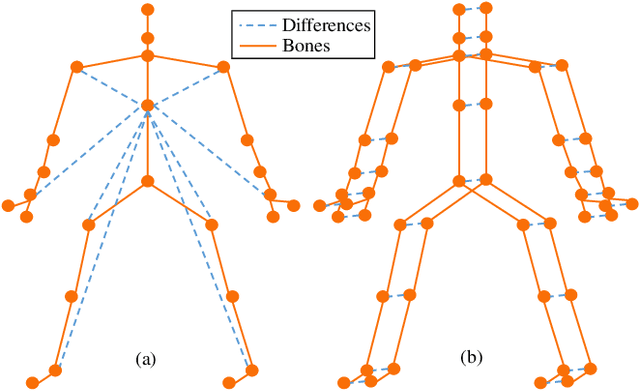
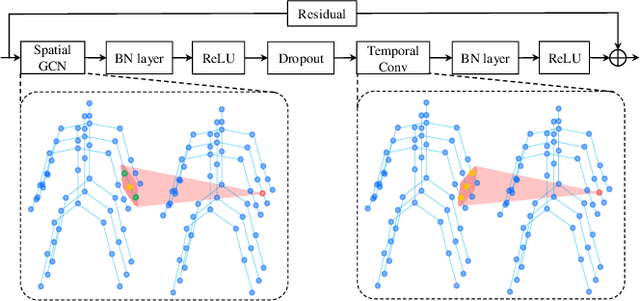
Abstract:Current methods for skeleton-based human action recognition usually work with complete skeletons. However, in real scenarios, it is inevitable to capture incomplete or noisy skeletons, which could significantly deteriorate the performance of current methods when some informative joints are occluded or disturbed. To improve the robustness of action recognition models, a multi-stream graph convolutional network (GCN) is proposed to explore sufficient discriminative features spreading over all skeleton joints, so that the distributed redundant representation reduces the sensitivity of the action models to non-standard skeletons. Concretely, the backbone GCN is extended by a series of ordered streams which is responsible for learning discriminative features from the joints less activated by preceding streams. Here, the activation degrees of skeleton joints of each GCN stream are measured by the class activation maps (CAM), and only the information from the unactivated joints will be passed to the next stream, by which rich features over all active joints are obtained. Thus, the proposed method is termed richly activated GCN (RA-GCN). Compared to the state-of-the-art (SOTA) methods, the RA-GCN achieves comparable performance on the standard NTU RGB+D 60 and 120 datasets. More crucially, on the synthetic occlusion and jittering datasets, the performance deterioration due to the occluded and disturbed joints can be significantly alleviated by utilizing the proposed RA-GCN.
Richly Activated Graph Convolutional Network for Action Recognition with Incomplete Skeletons
May 17, 2019



Abstract:Current methods for skeleton-based human action recognition usually work with completely observed skeletons. However, in real scenarios, it is prone to capture incomplete and noisy skeletons, which will deteriorate the performance of traditional models. To enhance the robustness of action recognition models to incomplete skeletons, we propose a multi-stream graph convolutional network (GCN) for exploring sufficient discriminative features distributed over all skeleton joints. Here, each stream of the network is only responsible for learning features from currently unactivated joints, which are distinguished by the class activation maps (CAM) obtained by preceding streams, so that the activated joints of the proposed method are obviously more than traditional methods. Thus, the proposed method is termed richly activated GCN (RA-GCN), where the richly discovered features will improve the robustness of the model. Compared to the state-of-the-art methods, the RA-GCN achieves comparable performance on the NTU RGB+D dataset. Moreover, on a synthetic occlusion dataset, the performance deterioration can be alleviated by the RA-GCN significantly.
Mexican Hat Wavelet Kernel ELM for Multiclass Classification
Feb 20, 2019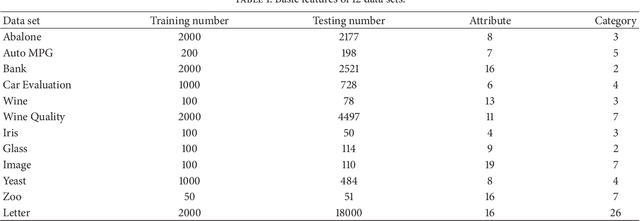
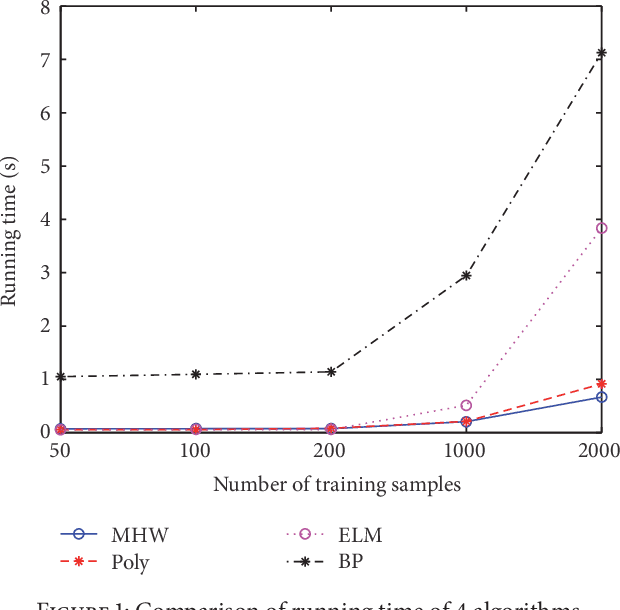


Abstract:Kernel extreme learning machine (KELM) is a novel feedforward neural network, which is widely used in classification problems. To some extent, it solves the existing problems of the invalid nodes and the large computational complexity in ELM. However, the traditional KELM classifier usually has a low test accuracy when it faces multiclass classification problems. In order to solve the above problem, a new classifier, Mexican Hat wavelet KELM classifier, is proposed in this paper. The proposed classifier successfully improves the training accuracy and reduces the training time in the multiclass classification problems. Moreover, the validity of the Mexican Hat wavelet as a kernel function of ELM is rigorously proved. Experimental results on different data sets show that the performance of the proposed classifier is significantly superior to the compared classifiers.
* Published by Computational Intelligence and Neuroscience, 8 pages, 1 figure, 13 tables
 Add to Chrome
Add to Chrome Add to Firefox
Add to Firefox Add to Edge
Add to Edge